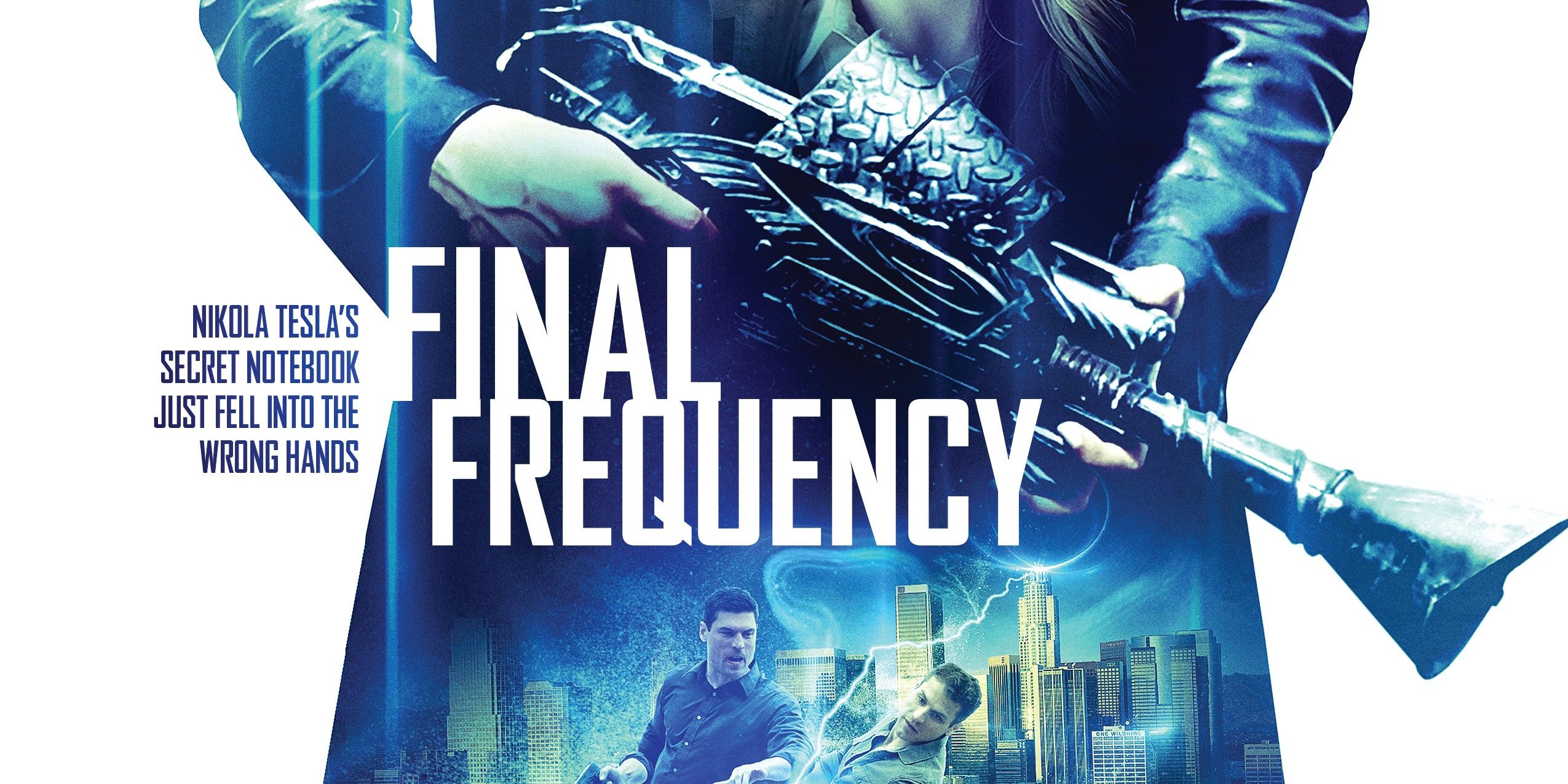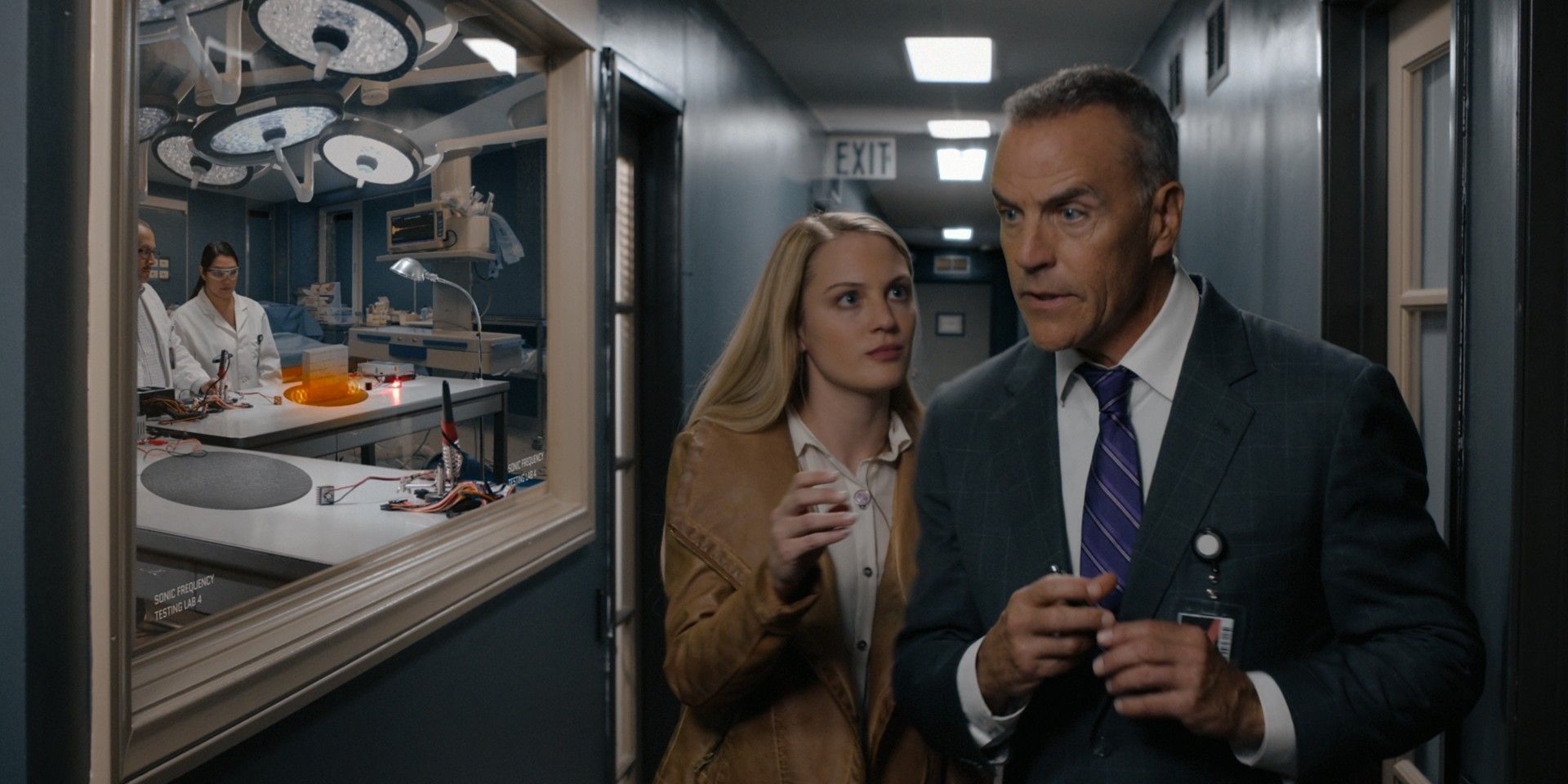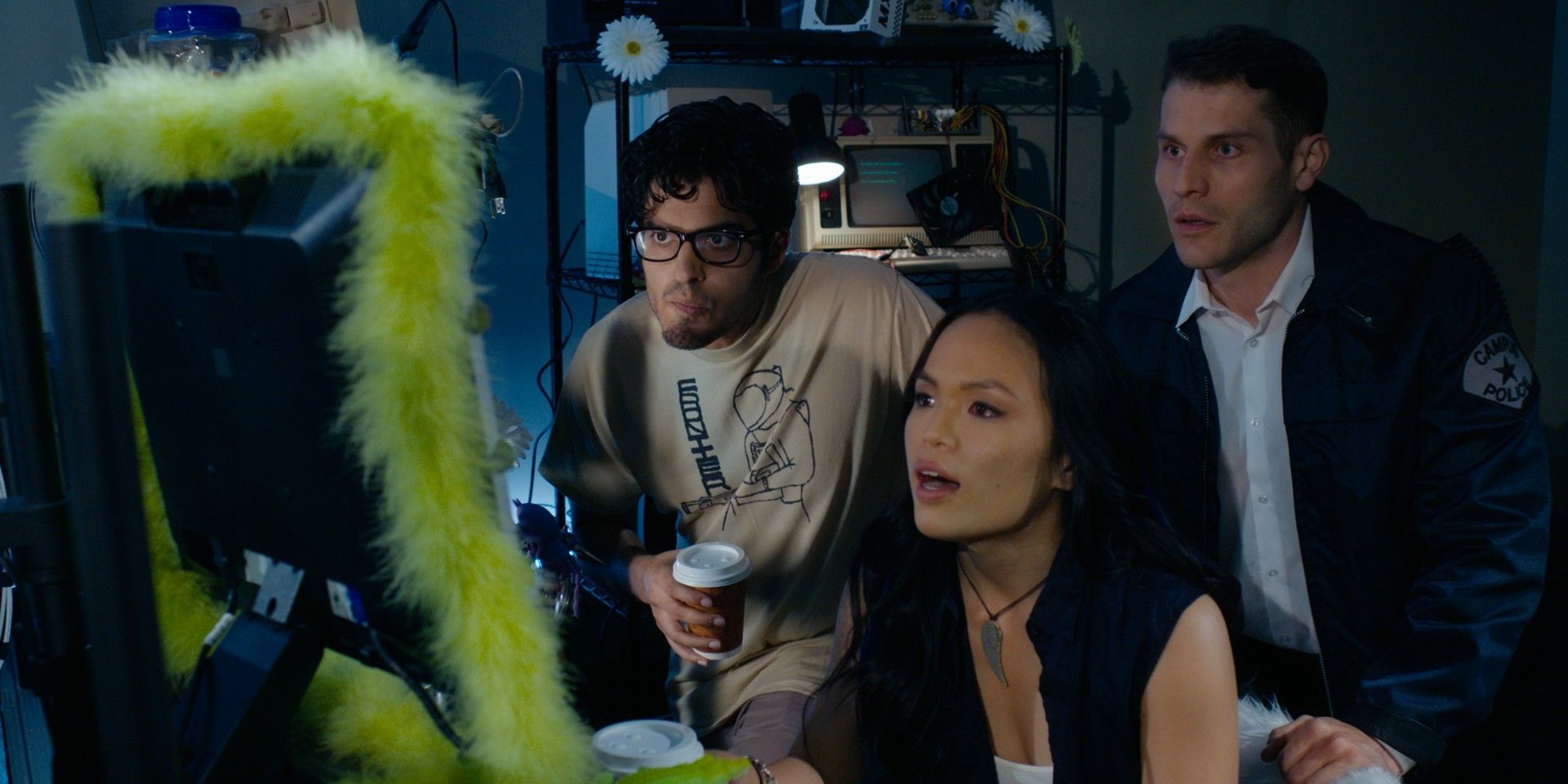Science fiction can hold a mirror up to humanity and allow audiences a chance to reflect on technology, progress, and human nature itself. But it doesn't have to be so self-reflective. Sometimes, the best sci-fi feels like an action-packed romp, filled with technology that's not there to aid introspection but to cause carnage. Final Frequency is this type of campy sci-fi, throwing trope after trope at viewers while guiding them through a high-stakes adventure.
Final Frequency centers on the lost notebook of eccentric inventor Nikola Tesla, which contains instructions for manipulating frequencies to cause earthquakes and/or mind-control. Determined to use Tesla's research to destroy world leaders at the G-20 World Economic Summit, rogue scientists have kidnapped the notebook's owner, a local L.A. professor. His Ph.D. student must find the notebook, rescue the professor, and prevent the massive earthquake with the help of her brother, some hackers/LARPers, and a security guard.
At points, the story of Final Frequency is ridiculous, but, it's always fun. The tension builds from small tasks, like recovering Tesla's notebook, to larger arcs like rescuing the professor by breaking into a dangerous facility, to the so-big-it's-bananas scope of saving the entire G-20 summit. The sci-fi technology of Final Frequency also skirts the edge of being cool/silly. There are contacts that let characters see soundwaves and a device that looks suspiciously like a coffee maker that lets people see behind objects using rainbow light. As the movie grows in scope and weirdness, it brings the audience along for the ride with its bold choices.
Director Tim Lowry finds real-world parallels to the dangers of Tesla's notebook in military research on sonic weapons and ionosphere radio signals. While the dangerous possibilities feel removed from the film's premise, it certainly roots Final Frequency in the classic, pulpy science fiction of a Michael Crichton movie. While the movie may not be successful in underlining the dangers of this technology in everyday life, it is certainly grounded in a way that makes some of Final Frequency's potentially ridiculous premise much more believable.
Final Frequency is filled with interesting characters. Seismology Ph.D. student Esther Dahlset brings a relatable, over-worked character to center stage, while her military brother with PTSD makes sure the characters aren't all rooted in the often-unapproachable confines of academia. The Nanny's Charles Shaughnessy steals the show as the professor keeping Tesla's secrets. Watching him explain the importance of some of Tesla's work is captivating. Perhaps the most compelling character is hacker Rocky Kai (Nikki SooHoo) whose bright and kitschy aesthetic and absolute confidence is utter gold.
Initially, the story centers on women protagonists, giving power and much of the narrative to Esther Dahlset (Kirby Bliss Blanton) and Rocky Kai; but this focus is hampered by late-stage romances that are distracting. Since the idea for Final Frequency comes from Lowry's daughter, it's a shame to see these women characters undermined.
However, Paul Dahlset, Esther's Deaf brother, is problematic. Played by hearing actor Luke Guldan, Paul's Deafness is a result of his time in the military, memories explicitly shown during flashbacks throughout Final Frequency. Giving Deaf roles to hearing actors isn't great, but worse is the fact that Paul's Deafness is just a plot point without context. After one quick exchange in American Sign Language, Paul reminds his sister he can read lips and from that point on is treated as a hearing character and is never shown engaging with Deaf culture.
Even Final Frequency's focus on Tesla may not be a selling point. Only a few decades ago Tesla was something of an unknown. But since his feature in wildly popular movies and television shows like The Prestige and Doctor Who, Tesla is standard information. Final Frequency also hand-waves away some of the problematic aspects of Tesla, including his racist opinions on things like eugenics. While acknowledging this issue, the professor describes Tesla's ideas as "benign," almost seeming to set him up for a villain turn.
Final Frequency has some amateur moments as well, both behind and in front of the camera. A close-up of the professor's bookshelf reveals it's not filled with texts on his academic subject but rather movie-making books, presumably from the crew and set. Some scenes showcase stilted performances and static composition, bringing any momentum the story had to a grinding halt. Some plot points feel utterly contrived or even forgotten.
Ultimately, Final Frequency moves past these clunky moments and provides a fast-paced, goofy adventure. It might have benefited from a couple more editing passes, but even now it's worth watching for fans of the sci-fi genre eager for some moments of uncomplicated fun.
Final Frequency is directed by Tim Lowry will be available on VOD on Aug. 31st.



